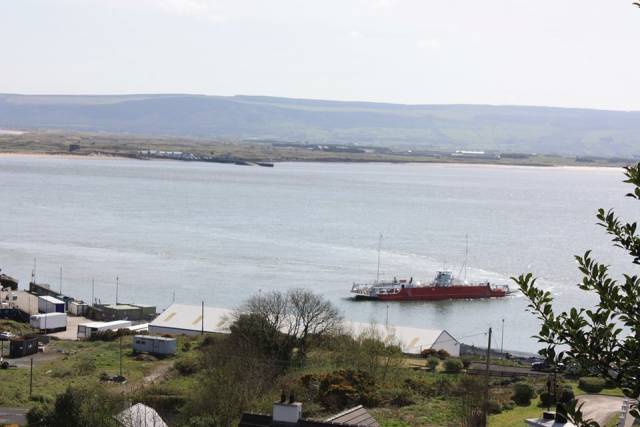#NorthernLoughs – Inishowen Peninsula, Co. Donegal is unique on the island of Ireland given that two coastal 'car' ferry routes run from both sides of the peninsula, one of which is also a cross-border link, writes Jehan Ashmore.
On the eastern side of the peninsula is where the Lough Foyle Ferry Company operate a 15 minute route between Greencastle, Co. Donegal to Magilligan, Co. Derry-Londonderry. At Greencastle, tomorrow (Sunday 17th July) is to be held the Clipper Family Funday (3-5pm) before the race begins at 6pm.
The year-round Lough Foyle operated route is up and running since Fraser Ferries acquired the cross-border ferry link (see also Passage East Ferry) that was closed last year by a previous management as reported on Afloat.ie.
It transpires that since that report, the original ferry, Foyle Venture (300 passenger / 44 cars plus lorries) has been retained operating on the Foyle and under Fraser Ferries. The double-ended loading ferry operates 7 days per week and takes 15 minutes crossings. Fares are 20% cheaper, claims the new operator than those of the predecessor in 2015.
Frazer Ferries are also planning to develop another cross border link (Co. Louth/Down) on Carlingford Lough between Greenore and Greencastle, not to be confused with its Donegal counterpart. Another similarity, it that the crossing times would be the same, 15 minutes.
Returning to the Inishowen Peninsula and that of the other side, is where motorists can also benefit travelling onwards in either west or east directions on the seasonal-only Lough Swilly Ferry service. This is the longer of the two routes, taking around 25 minutes to complete between Buncrana and Rathmullan also in Co. Donegal.
A daily service is provided until September, then the only option is by road to Letterkenny.
Likewise of the Foyle route, this service had been under different ownership but since last year having begun using the Coll. The name of the bow-only loading ‘Island’ class ferry reveals her Scottish Western Isles namesake origins.
Entering service in 1974, Coll with a 96 passenger/6 car plus lorry capability, originally served Caledonian MacBrayne/CalMac. The Scottish government owned ferry operator in the Outer Hebrides also known as the Western Isles has an extensive network. Afloat.ie will be reporting on routes among those on the Forth of Clyde.
Elder sister, Rhum, by only a year, also retains her Scottish isles naming theme albeit now serving in Irish waters and on a mainland-island link. This is between Burtonport and Aranmore Island in northwest Co. Donegal and operated by Aranmore Ferry, a sister company of the operator on Lough Swilly.






























































